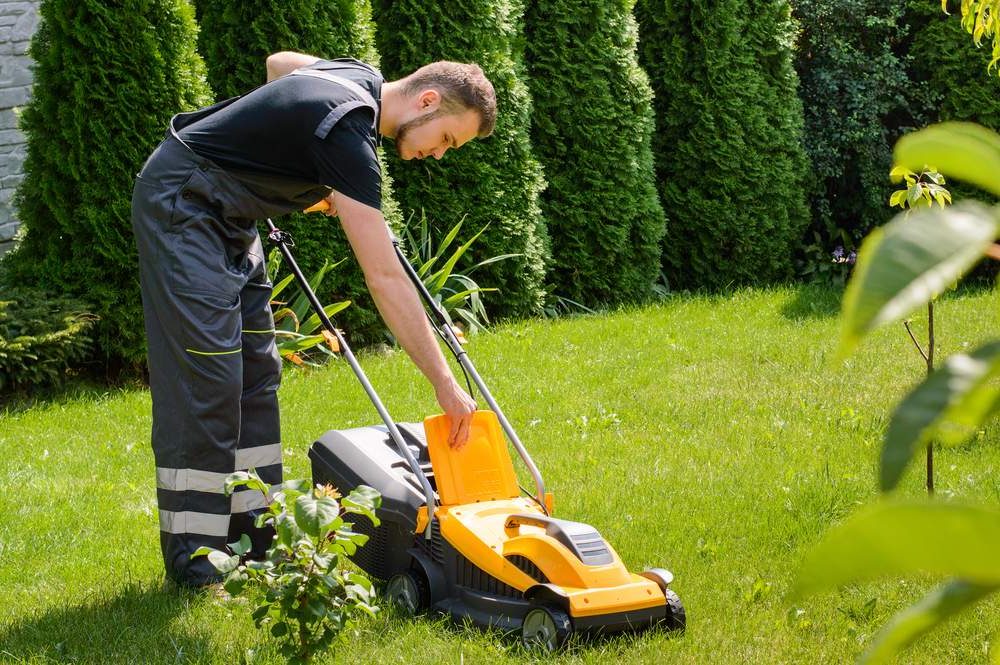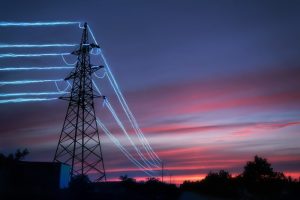Home > Energy Plans > How Much Electricity Does A Lawn Mower Use?
How Much Electricity Does A Lawn Mower Use?
Are you wondering how much electricity your lawn mower uses? Find out here and also learn energy-saving tips with Savvy.
Author
Savvy Editorial TeamFact checked

Lawn mowers play a crucial role in making our lawns look great and maintaining our outdoor spaces. But have you ever wondered how much electricity they consume? Understanding the energy usage of your lawn mower can help you make informed decisions about energy efficiency and manage your electricity costs. In this guide, we explore the average energy consumption of various types of lawn mowers, from traditional corded models to modern battery-powered electric ones. Discover the power requirements and efficiency factors to consider when choosing and operating a lawn mower right here with Savvy.
How much electricity do different types of electric lawn mowers use?
Electric lawn mowers offer a convenient and more eco-friendly alternative to traditional loud petrol-powered mowers. They are available in various types, each with its own electricity usage characteristics. Here, we explore the electricity consumption of different types of electric lawn mowers commonly used in Australia.
Corded electric lawn mowers
Corded electric lawn mowers operate by connecting to a power outlet using an electric cord. These mowers typically have a power rating ranging from 1,200 to 1,800 watts. The power consumption can vary depending on the cutting width, motor efficiency, and grass conditions. On average, corded electric lawn mowers consume approximately 0.7 to 1.2 kilowatt-hours (kWh) of electricity per hour of use.
Battery-powered electric lawn mowers
Battery-powered electric lawn mowers are cordless and operate using rechargeable batteries. The power consumption of these mowers depends on the battery capacity and the mowing conditions. Generally, battery-powered mowers have power ratings ranging from 500 to 1,500 watts. A fully charged battery can provide energy for approximately 30 minutes to 2 hours of mowing, consuming around 0.3 to 1.5 kilowatt-hours (kWh) of electricity per charge.
Robotic lawn mowers
Robotic lawn mowers are autonomous mowers that operate without human intervention. They are powered by rechargeable batteries and follow pre-programmed mowing patterns. The power consumption of robotic mowers is relatively low, usually ranging from 50 to 200 watts. These mowers are designed for efficiency, and their electricity usage per hour of operation is minimal, usually around 0.05 to 0.2 kilowatt-hours (kWh).
How can I minimise my power usage when cutting my lawn?
For maximum energy efficiency while using an electric lawnmower, consider these energy-saving tips:
- Opt for a mower with an appropriate cutting width for your lawn size. Obviously, the larger your lawn area, the bigger lawn mower you should consider.
- Choose a battery-powered mower with an energy-efficient battery capacity suitable for your lawn area. Charge the battery during off-peak electricity hours, to reduce the overall cost of charging up the battery.
- Keep the lawnmower blades sharp and the mower well-maintained for optimal performance and the lowest power use.
- Follow a regular mowing schedule to avoid excessive energy consumption due to trying to tackle overgrown long grass.
By selecting the right type of electric lawn mower you can reduce your electricity usage while maintaining a well-groomed lawn. Always refer to the manufacturer's specifications for detailed information on the electricity usage of specific models.
How do I calculate how much an electrical appliance costs to run?
To calculate how much an appliance costs to run, you can follow these steps:
- Check the appliance's power rating: Look for the appliance's power rating, usually indicated in watts (W) or kilowatts (kW). This information is typically found on the appliance's label or in the user manual.
- Determine the operating time: Estimate or measure the number of hours or minutes you use the appliance daily.
- Convert kilowatts to kilowatt-hours: If the power rating is given in kilowatts (kW), multiply it by the number of hours the appliance operates to get the energy consumption in kilowatt-hours (kWh). For example: If an appliance has a power rating of 1.5 kW and operates for 4 hours a day, the energy consumption would be 1.5 kW x 4 hours = 6 kWh.
- Check your electricity tariff: Find out the cost per kilowatt-hour (kWh) of electricity from your electricity bill, or contact your energy provider to find out the tariffs on your energy plan. The tariff may vary depending on the time of day.
- Calculate the cost: Multiply the energy consumption (in kWh) by the cost per kilowatt-hour (kWh) from your electricity tariff to determine the cost of running the appliance.
Example: If the cost per kWh is $0.25, the cost of running the appliance for 4 hours would be 6 kWh x $0.25/kWh = $1.50.
Remember that this calculation provides an estimate of the running cost for a specific appliance. The actual cost may vary based on factors like energy efficiency, usage patterns, and fluctuating electricity tariffs. It's also important to consider standby power consumption and any additional energy-saving features or settings the appliance may have.
Which household appliances cost the most to run?
These household appliances are probably responsible for 90% of your home energy use:
Fridges and freezers: Older or low-energy-rated models can consume a lot of electricity. Switching to energy-efficient models helps reduce power consumption and lower electricity bills.
Reverse-cycle air conditioners: These appliances are known for their high energy consumption. Choose energy-efficient models with features like programmable timers, inverter technology, and zoning capabilities to reduce energy use.
Pool pumps and spa heaters: These appliances also use a lot of energy. Opt for energy-efficient pool pumps with variable speed options and built-in timers. Consider solar-powered heaters or heat pumps for your pool and spa to further reduce electricity consumption. Also, placing your pool filter and heater on a controlled load tariff can lower overall energy costs.
Water heaters: Explore energy-efficient options like heat pumps or solar water heaters to minimise the energy used for hot water heating.
Washing machines and dryers: Select energy-efficient models with features like load sensors, eco modes, and moisture sensors in clothes dryers to optimise energy consumption.
Dishwashers: Look for energy-efficient models with half-load options, eco modes, and delayed start functions to minimise power usage.
Ovens and stovetops: Choose models that heat up quickly, distribute heat evenly, and offer features like convection cooking or self-cleaning functions.
Computers and office equipment: Utilise power-saving features such as sleep mode, and remember to turn them off when not in use. Choose energy-efficient devices with a rating above three stars.
By making informed choices and opting for energy-efficient household appliances, you can reduce your overall energy consumption, decrease your electricity bills, and contribute to a more sustainable future.
Helpful energy guides
Compare energy plans
Disclaimer:
Savvy is partnered with Econnex Comparison (CIMET Sales Pty Ltd, ABN 72 620 395 726) to provide readers with a variety of energy plans to compare. We do not compare all retailers in the market, or all plans offered by all retailers. Savvy earns a commission from Econnex each time a customer buys an energy plan via our website. We don’t arrange for products to be purchased directly, as all purchases are conducted via Econnex.
Any advice presented above is general in nature and doesn’t consider your personal or business objectives, needs or finances. It’s always important to consider whether advice is suitable for you before purchasing an energy plan. For further information on the variety of energy plans compared by Econnex, or how their business works, you can visit their website.










